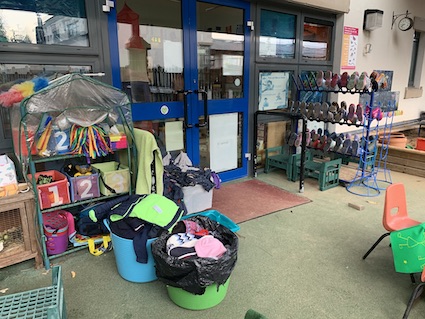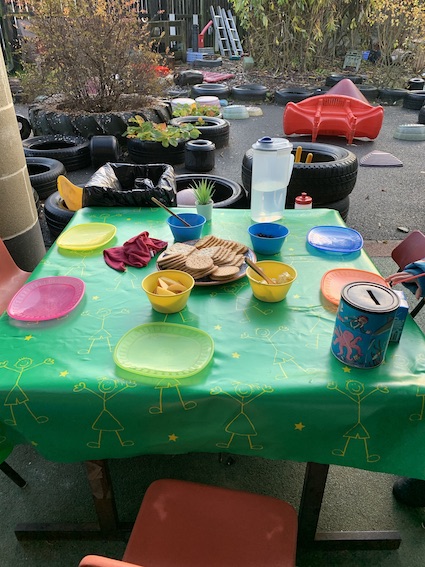How do you demonstrate that your setting truly values the outdoors? This is a crux question that can be surprisingly difficult to exemplify. In my work, I visit a lot of early years settings. I am often told of the importance of outdoor experiences. However the practice does not necessarily mirror the verbal aspirations of staff.

Back in November I had the privilege of visiting Windmill Integrated Primary School Nursery in Dungannon, Northern Ireland. The photos may look familiar, as this is the stomping ground of Kierna Corr who is the nursery teacher. She writes the well-known blog, Learning for Life, which documents the daily events of her nursery along with all her international adventures.

What I immediately loved was the start to their nursery day. Kierna arrived at the nursery around 30 minutes prior to the children arriving. The first thing she and the other staff do is to set up the outdoor space. The indoor space is only attended to afterwards. In my experience this rarely happens. Usually the outdoor space is neglected or only one or two people who are on “outdoor duty” for the day or week are involved in the preparation of the outdoor space.
Whilst there is a formal entrance to the nursery via the indoor space, the children and their parents enter via a side door straight into the outdoor space. The parents drop their children off into the outdoor space every day, all year round, whatever the weather. Registration happens in the outdoor space.

Near the doors to the inside, there are spare clothing and welly boots. The children are used to putting on wellies if needed and more outdoor clothing if their own is insufficient to be outside.
Snack is also available from the start of the day and it is always served outside. The children know that this is where they go to have a wee bite to eat during the morning. It is self-service and the children are thoroughly familiar the routines and expectations. Once a week, snack is cooked on the fire which is an exciting ritual.

The children and parents were clearly accustomed to this routine which has been in place since 2006. Kierna has blogged about how this started and the positive impact it has had for her children, their parents and the staff. It is clearly a small change that has had a huge difference.
For me, this morning routine sends a clear message that the nursery genuinely values being outside. When settings are looking to further develop their outdoor provision, it is helpful to consider an outdoor start as one of several approaches to helping children and parents acclimatise to the expectations.
Useful questions to consider are:
- Do our parents experience and witness our outdoor space on a daily basis. Do they see children playing there?
- When can children play outside in our nursery? Whilst the door may be open or a child can ask to go outside, this is very different to being outside to begin with.
- How often is snack available outside? Is it an occasional treat or fine weather option, or is it always available?
- Do all children in your nursery spend significant amounts of time outside? Often when the option is free flow, practitioners tell me that only a few children choose to go outside especially during inclement weather. What are you doing to ensure these children are motivated to be outside, know what is available and what the play possibilities are?

The nursery outdoor space is not particularly spacious at Windmill Integrated Primary School. However, it feels much loved and well-used and is testimony to the value placed on the use of this space by the staff who work there.






























Juliet, thank you so much for spending time with us & for asking me questions about why things are done a certain way so as to make me reflect on ‘why’ they are indeed done that way. After this length of time going outside first thing, I can’t imagine doing it any other way now! Thanks again for the lovely post & come visit anytime.